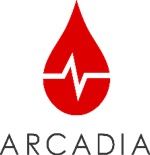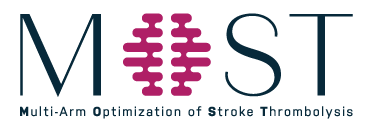The NIH has created the NIH StrokeNet to conduct small and large clinical trials and research studies to advance acute stroke treatment, stroke prevention, and recovery and rehabilitation following a stroke. This network of 25 regional centers across the U.S., which involves more than 200 hospitals, is designed to serve as the infrastructure and pipeline for exciting new potential treatments for patients with stroke and those at risk for stroke. In addition, NIH StrokeNet will provide an educational platform for stroke physicians and clinical trial coordinators.
The Institute for Stroke and Cerebrovascular Diseases oversees The Gulf Regional Area Stroke Programs and Oklahoma (GRASP-OK) Consortium, a collaborative research effort among sites located in Texas, Oklahoma, Louisiana, Alabama, and Mississippi and intends to serve the needs of an incredibly diverse population of patients throughout the Gulf states. GRASP conducts high quality clinical research devoted to identifying new treatments in stroke prevention, acute stroke management, and stroke recovery. We are currently enrolling in the following StrokeNet trials:
-
A Trial Cardiopathy and Antithrombotic Drugs in Prevention after Cryptogenic Stroke (ARCADIA)

A Trial of Cardiopathy and Antithrombotic Drugs in Prevention after Cryptogenic Stroke (ARCADIA)
Principal Investigator: Anjail Sharrief, MD
A randomized trial of apixaban versus aspirin specifically in patients with cryptogenic stroke who have evidence of atrial cardiopathy. This trial will address several important knowledge gaps. First, it will advance our understanding of stroke pathophysiology by assessing whether atrial cardiopathy is a valid therapeutic target, which may set the stage for a primary prevention trial. Second, this trial will advance our understanding of optimal secondary stroke prevention therapy.
-
Multi-arm Optimization of Stroke Thrombolysis (MOST)

Multi-arm Optimization of Stroke Thrombolysis (MOST): a blinded, randomized controlled adaptive, multi-arm, adjunctive-thrombolysis efficacy trial in ischemic stroke
Principal Investigator: Andrew Barreto, MD
A maximum of 1200 patients will be enrolled at approximately 110 sites in the United States. The primary goal of the study is to determine the efficacy of two medications used in combination with ischemic stroke standard of care. We will determine if either medication, argatroban or eptifibatide infusions through an IV (intravenous), results in improvement in acute ischemic stroke (AIS) patients.
-
Sleep for Stroke Management and Recovery Trial (SleepSmart)

Sleep for Stroke Management and Recovery Trial (SleepSmart)
Principal Investigator: Anjail Sharrief, MD
SleepSmart is an investigator-initiated, phase 3 multicenter, prospective randomized controlled trial to test whether treatment of obstructive sleep apnea (OSA) with continuous positive airway pressure is effective for secondary prevention and recovery after stroke. The primary goals of this study are to determine whether treatment of OSA with positive airway pressure starting shortly after acute ischemic stroke or high risk TIA (1) reduces recurrent stroke, acute coronary syndrome, and all-cause mortality 6 months after the event, and (2) improves stroke outcomes at 3 months in patients who experienced an ischemic stroke.BASE is a multisite prospective study with an estimated enrollment of up to 1100 subjects adult subjects recruited from patients who present to the Emergency Department (ED) or hospital with suspected Acute Ischemic stroke or transient ischemic attack (TIA). We want to determine if a certain blood test, ISCDX, can differentiate between strokes originated by two different pathways: a clinically diagnosed cardioembolic stroke and a large artery atherosclerotic ischemic stroke. We will also assess the ability of a different blood test, TIADX, to identify clinically diagnosed TIAs.
-
TRANScranial direct current stimulation for POst-stroke motor Recovery - a phase II study (TRANSPORT 2)
TRANScranial direct current stimulation for POst-stroke motor Recovery - a phase II study (TRANSPORT 2)
Principal Investigator: Sean Savitz, MD
TRANSPORT 2 is a phase II multi-center randomized transcranial direct current stimulation (tDCS) study to determine the efficacy, safety, tolerability and feasibility of use of tDCS. Participants must be age 18-80 years, with a first-ever unihemispheric ischemic stroke in past 30-180 days resulting in unilateral limb weakness. The intervention sessions last 30-60 minutes, per session, and 10 intervention sessions are required over a 2-week (14 days) period.
